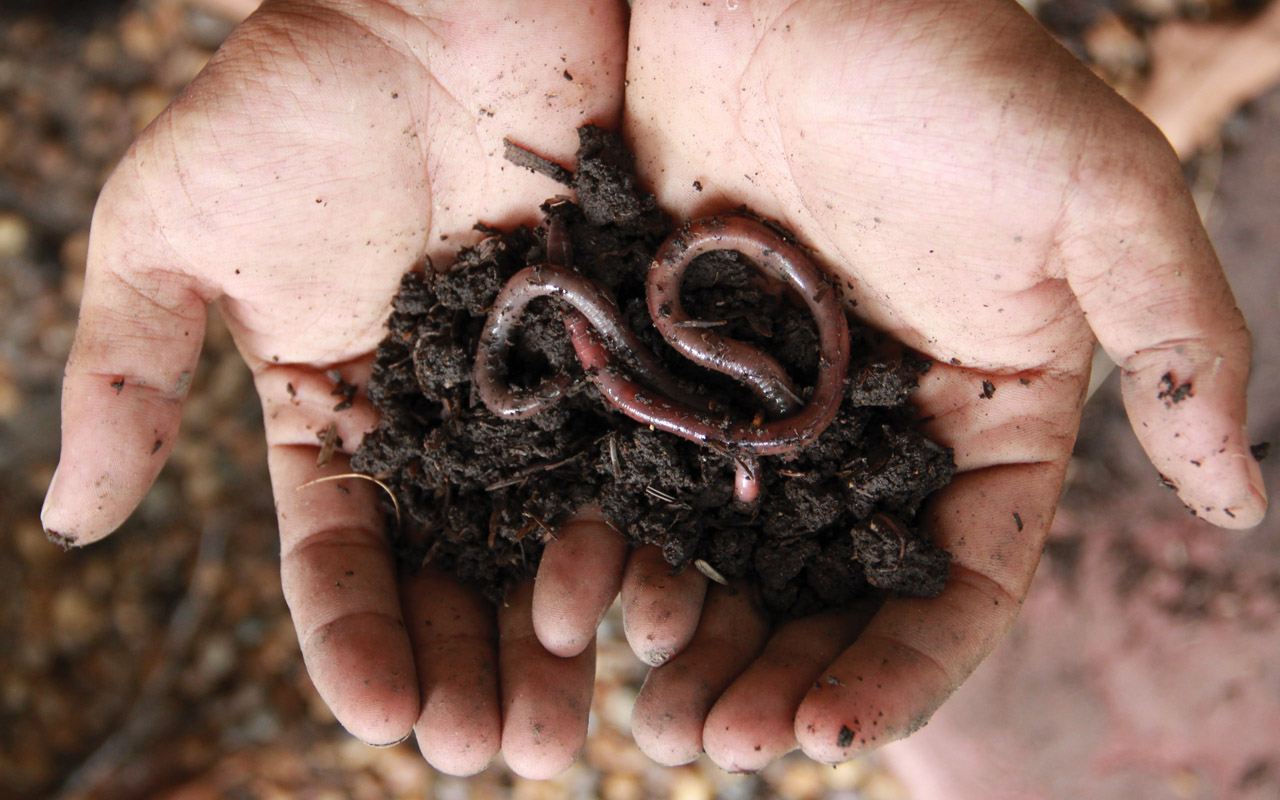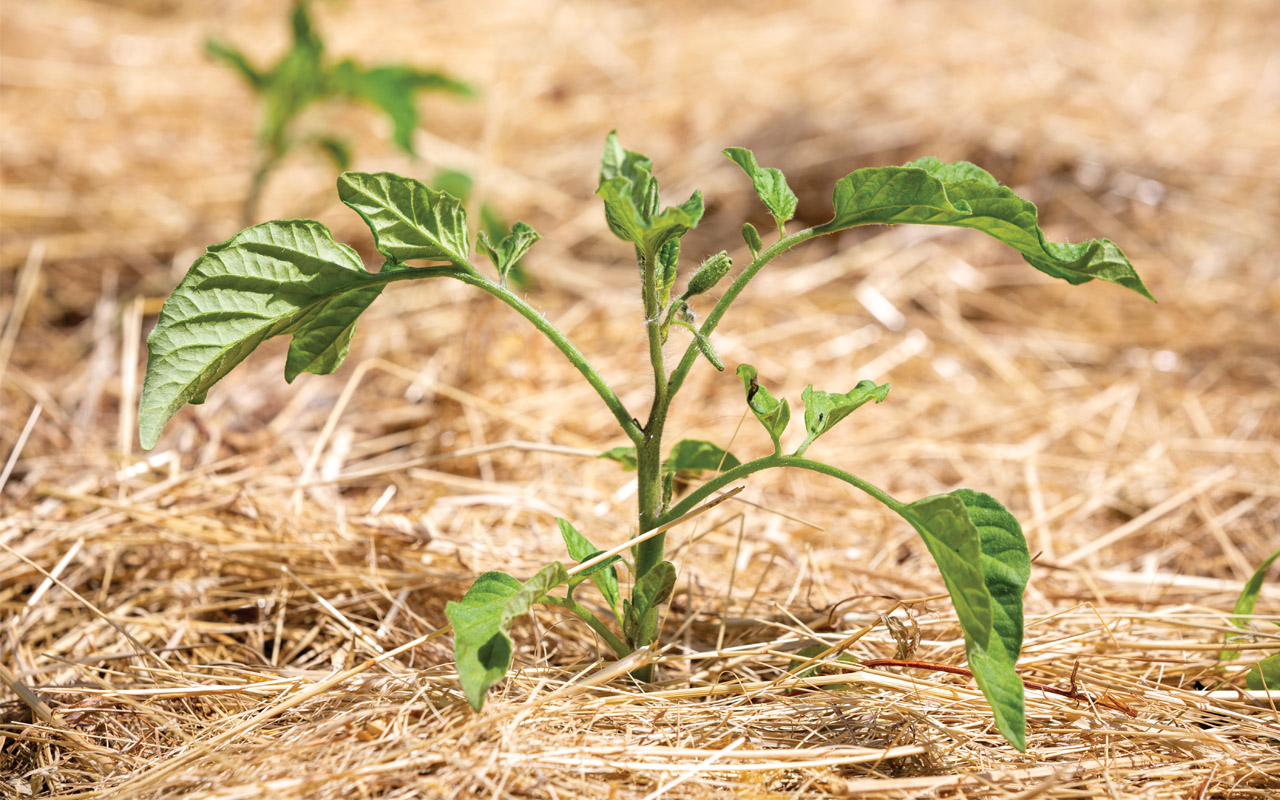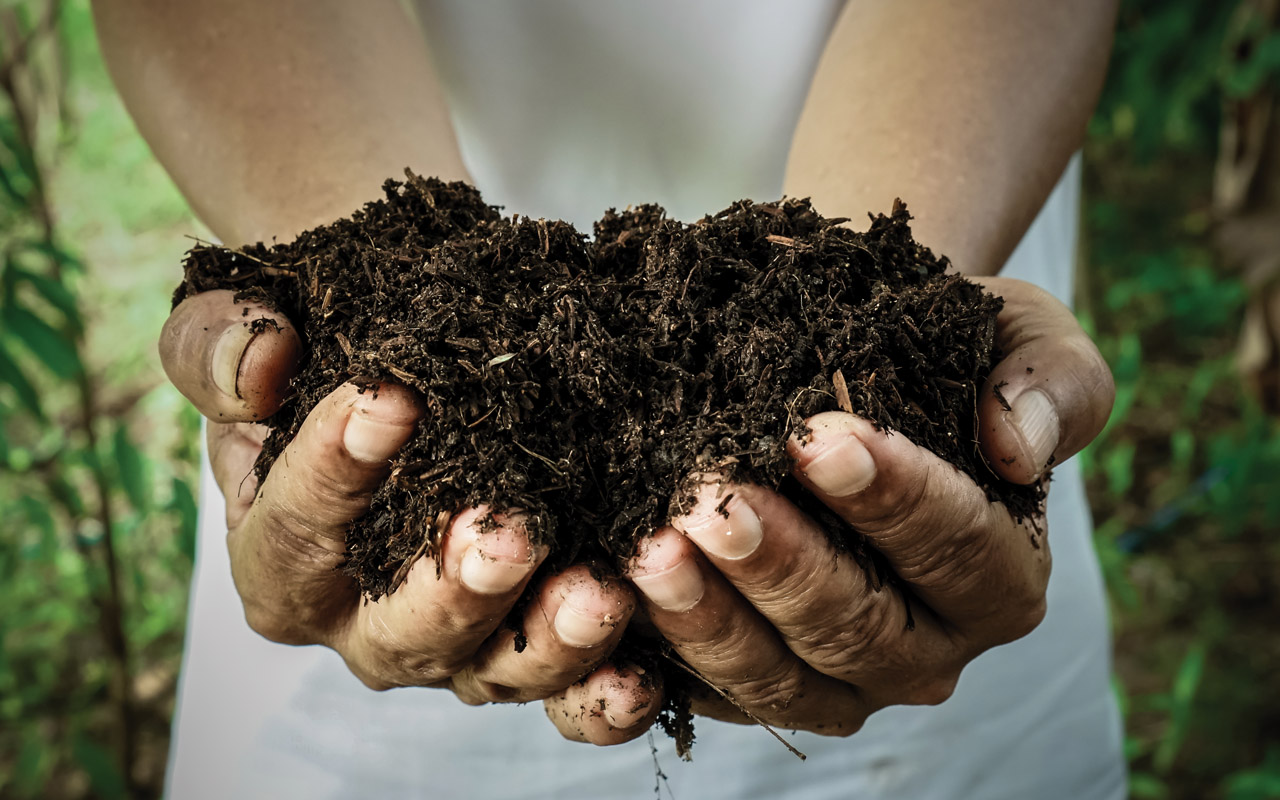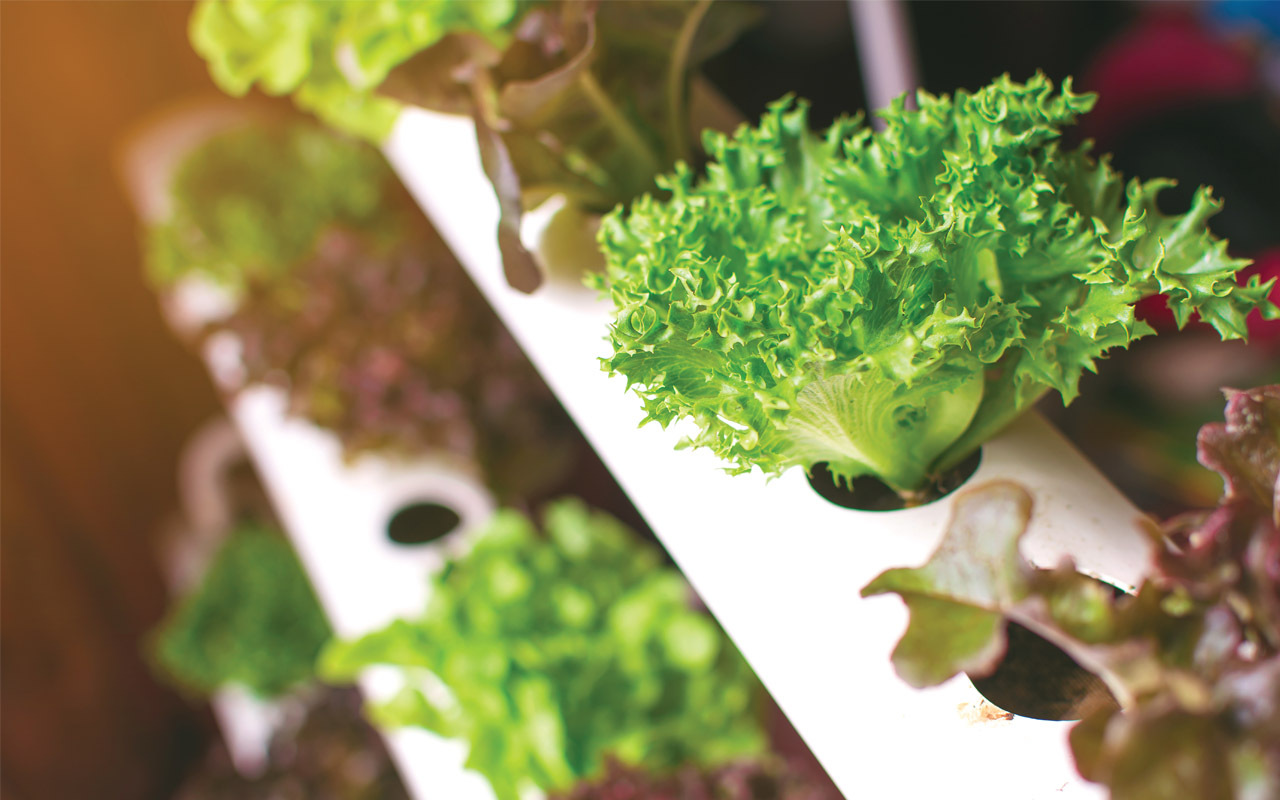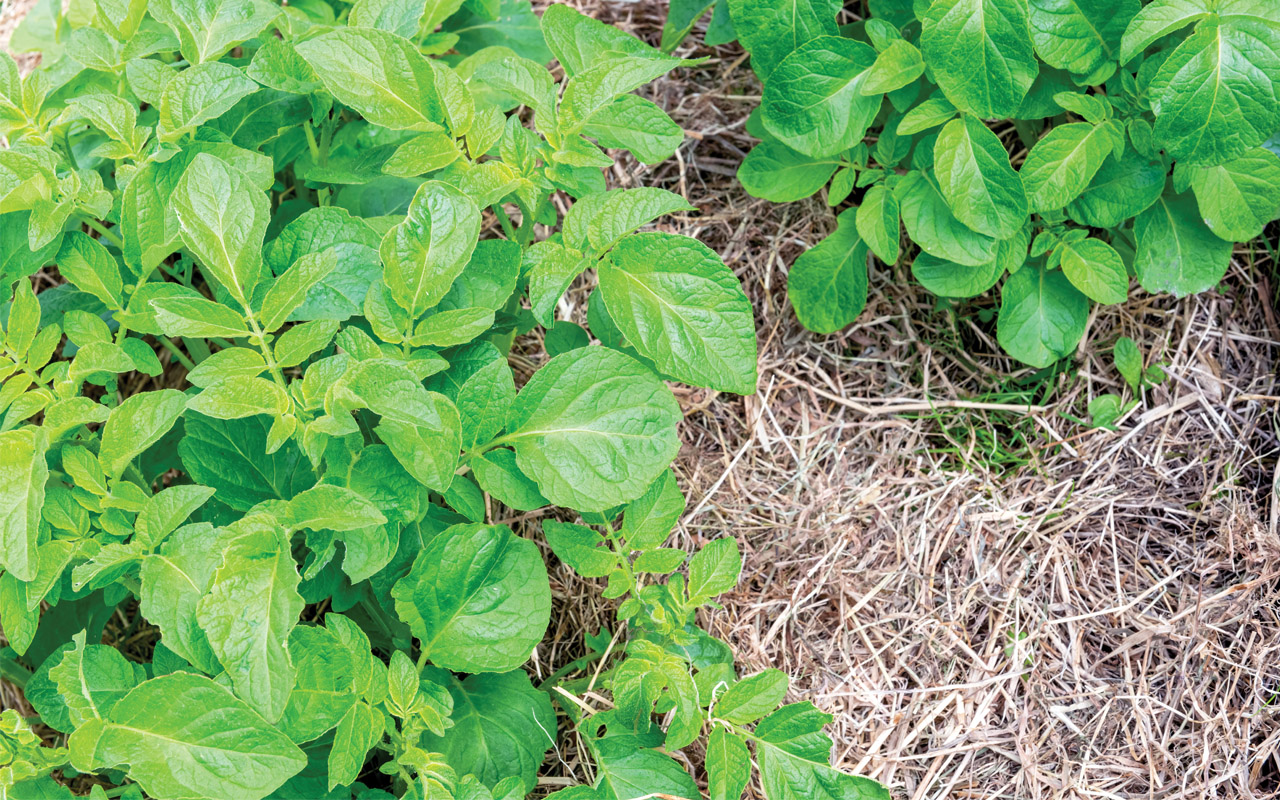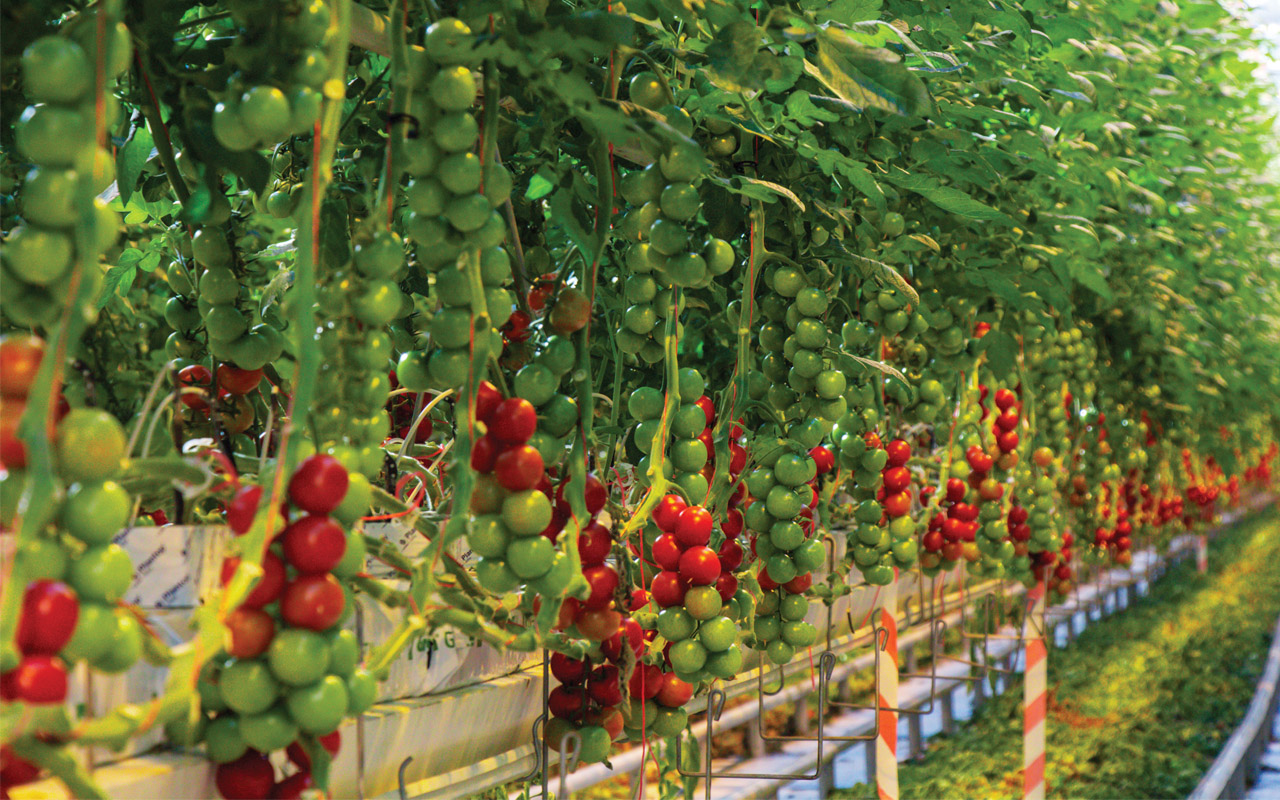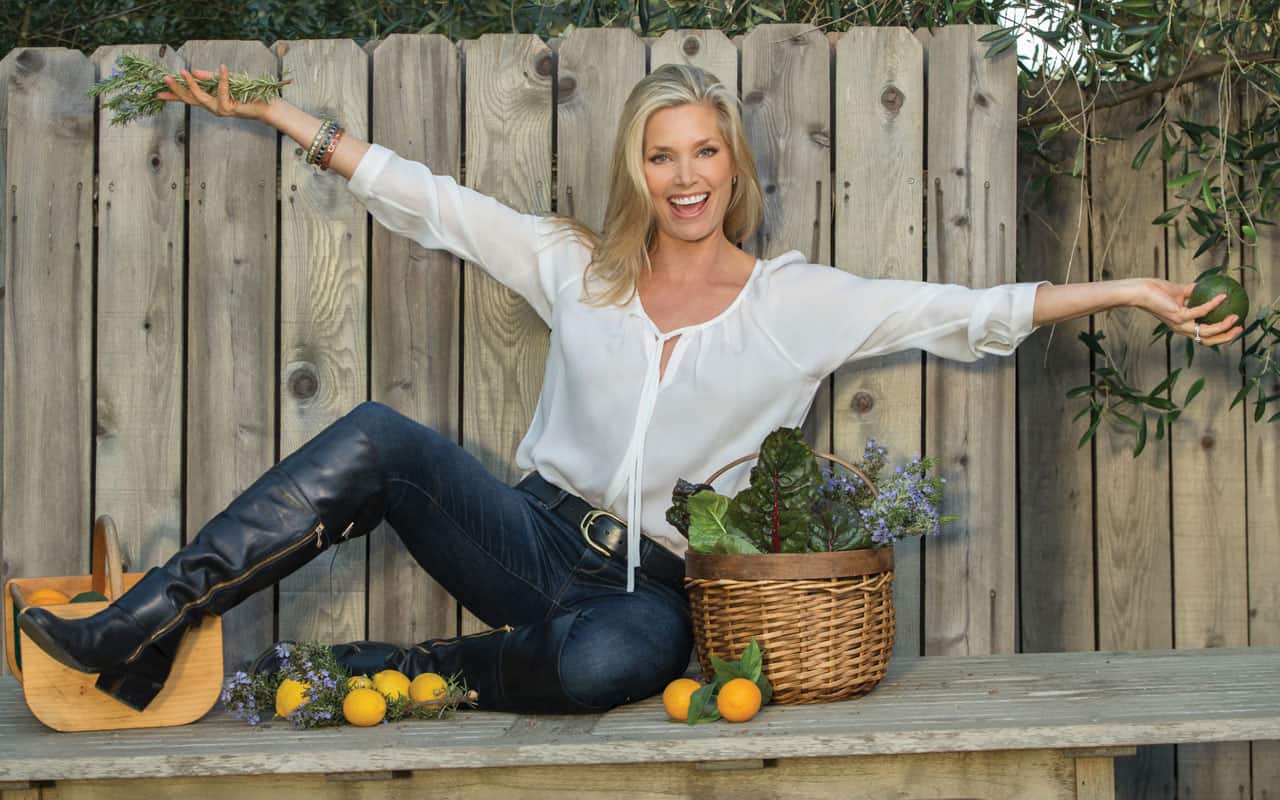
Gardening can seem overwhelming, taking up way more time than you actually have. Many people opt not to even try, for fear it will be too much work. Today there are many ways to garden and you might want to see what your options are before you write off growing vegetables in your future. Here is an overview of different gardening methods for the laziest of gardeners.
Now, there is no excuse for you not to start growing your own food today!
NO-DIG / LASAGNA GARDENING
“No-Dig” gardening is when you build your garden on the top of the ground. Yes, you can start your garden anywhere, as long as you have a water source nearby. This is organic, in ground gardening at its simplest form. Digging is the hardest part, so if you don’t like to dig, this is the garden for you!
In a no-dig garden, the soil is free to exist with minimal disturbance. In general, the soil remains untouched except for harvesting root crops or planting something. Soil has its own life and structure and we should learn to respect it. There are millions of live inhabitants deep in the sub-layers of your soil, which help your plants find nutrients and moisture. Have you ever noticed when you turn over the soil, those helpful little earthworms curl, stretch and flip around in jerking motions trying to find their way back into the soil? It’s better to let the microbes and worms do what they do best and leave them alone!
Lasagna gardening is a no-dig gardening method that results in rich, fluffy soil, increased yields, fewer weeds and fewer pests.
Like a lasagna, you will add layers of organic materials to your garden bed that will “cook down” over time, creating a good soil full of life. Start this garden in the fall so it has all winter to break down.
Materials needed for your Lasagna Garden:
Grass clippings, leaves, fruit and vegetable scraps, coffee grounds, tea leaves and tea bags, seedless weeds, manure, compost, seaweed, shredded newspaper or junk mail, pine needles, spent blooms, trimmings from the garden, peat moss, cardboard.
• Step 1: Prepare the Site
Level the site. Grass or weeds will be covered up and will not pose a problem. Measure and mark the dimensions of your desired bed.
• Step 2: Gather the Materials
Leaves, grass clippings, coffee grounds, newspaper or cardboard. If you don’t have compost, straw and manure, buy them.
• Step 3: 1st Layer
Put down a thick layer of cardboard or newspaper. This will act as a ground cover and keep the weeds down and will decompose and actually add to your soil!
• Step 4: 2nd Layer
Layer 2-3 inches of thick water-absorbent materials like straw, dried grass clippings, or bark.
• Step 5: 3rd Layer
Layer organic materials like grass clippings and compost 4 to 8 inches.
• Step 6: Water
Water the last layer and assist in the breakdown of the organic materials.
• Step 7: Subsequent Layers
Continue to layer, repeating layers 1-3 till it’s the height you need.
• Step 8: Cover crop
When you’re finished layering, plant a cover crop like crimson clover, or rye that can overwinter well.
• Step 9: Spring Planting
Now wait till spring. Your lasagna bed needs time to decompose letting the microbes do their job of making rich soil. It’s time to plant!
After harvesting your crops at the end of the season, put your lasagna bed away for the winter. Pile your crop’s debris on top of your bed, turn it under the soil and plant a cover crop. Your lasagna bed will be ready for your next spring crop.
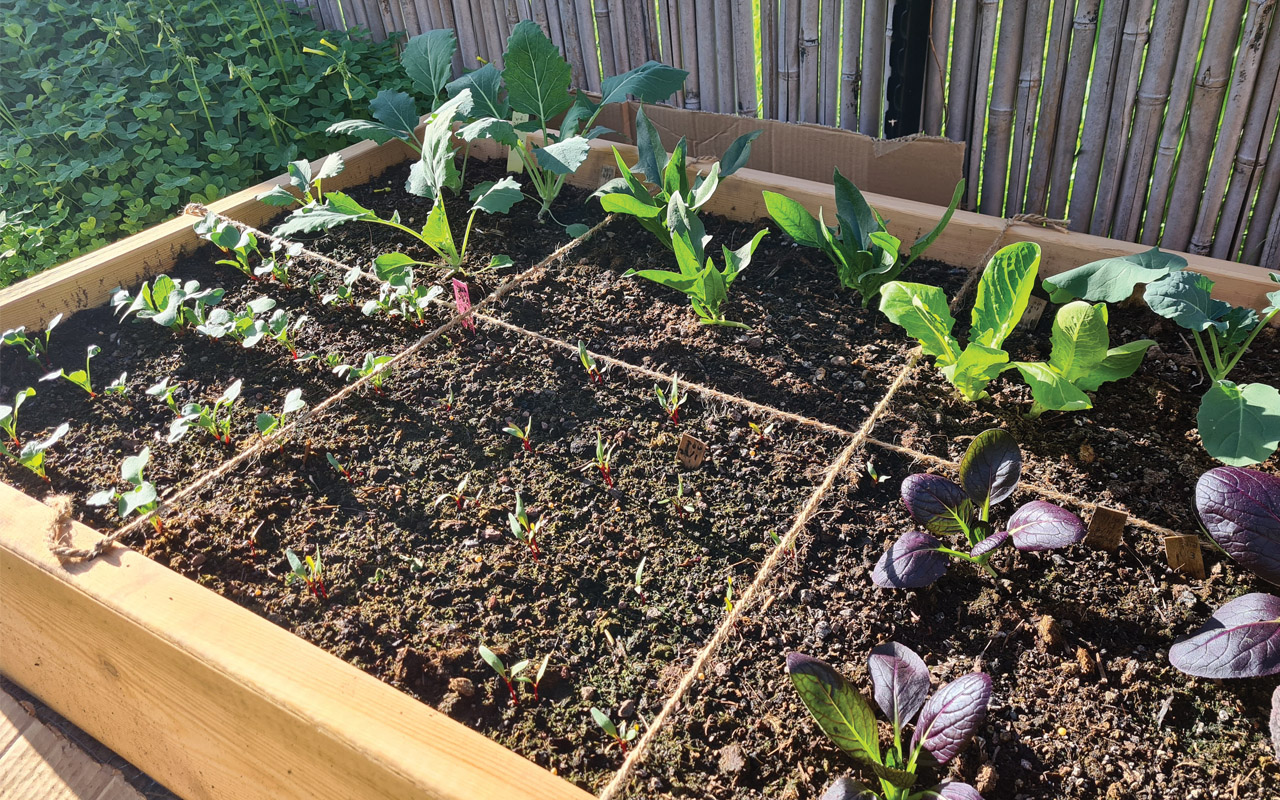
Square foot gardening
SQUARE FOOT GARDENING
This is an open-bottomed box, divided into a grid filled with a mix of light soil and compost that you can purchase. Each section is one square foot. Each square foot contains a number of plants, depending on the space that the plant takes up. For instance, one broccoli takes up the same amount of room as 4 lettuces, or sixteen carrots. This method helps with weeds and uses less water than the typical garden and is commonly used in urban settings and areas with contaminated soils. Square foot gardening can be an alternative for people with reduced mobility, as it can be built on a tabletop making it easily accessible. Another simple way to garden!
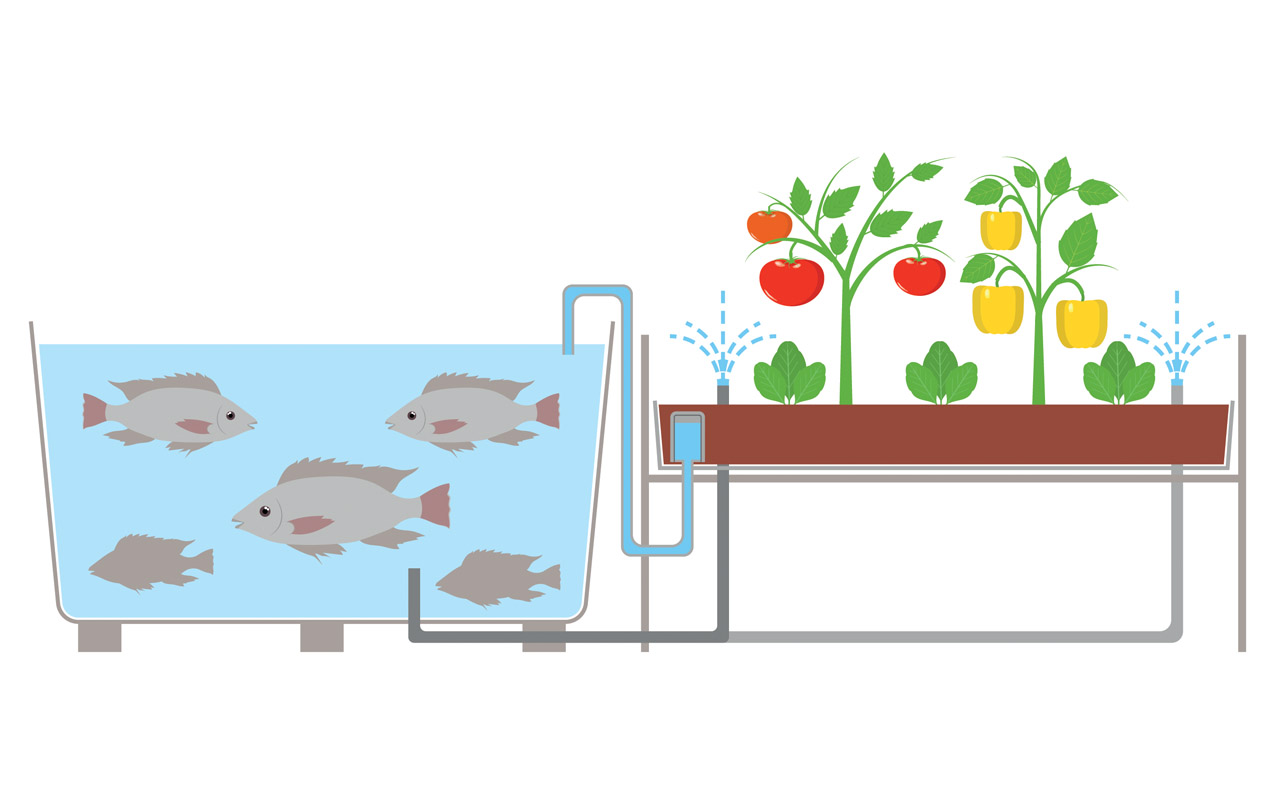
Illustration of Aquaponics gardening
HYDROPONIC GARDENING
This is a method that grows plants in water without soil. Plants only need water, nutrients and sun to grow. Growing vegetables hydroponically is not hard and the systems are made for small spaces such as a patio or balcony or for a full-scale production garden to feed a large family. The size of the systems can change but the basics stay the same. Hydroponic gardens can produce a lot of veggies in a small space. Say goodbye to weeding and digging! Gardening doesn’t get any easier.
The nutrient-rich solution continuously circulates through a reservoir using a small pump watering the seedlings planted in a growing medium. This water circulation process causes less evaporation, making hydroponics one of the most water-wise ways to grow, using 80% less water than soil-based gardening.
Once the system is set up, all you need to do is monitor the nutrient level of the water every week. Fill the reservoir as needed and empty and refill every month or two. You will spend most of your time harvesting and pruning your plants. It is as simple as that!
Advantages of Hydroponics:
• No soil
• No weeds
• No digging
• No soil-borne diseases
• No need to rotate crops
• No need to worry about watering
• Gardening at any desired level
• Produces lots of vegetables
• Takes up little space
• Great for gardening if you have poor soil
• You can go out of town and not worry about your garden
What to Grow Hydroponically:
Lettuces, Asian greens, spinach, rhubarb and chard. Vegetables such as eggplant, tomatoes, cucumbers and zucchini, corn and melons. Peas, sugar snaps and beans which can be grown up a frame sitting above or around the tank. Even root vegetables such as carrots and beetroot thrive and are delicious when grown in a deeper hydroponic system.
AQUAPONICS
Aquaponics is another soil-less gardening method and an organic gardening system that uses fish waste to nourish plants. There are a variety of systems, including simple trays in which plants sit with their bottoms hydrated and fertilized by the aquatic ecosystem. Kits are available for purchase. Choose the type of fish, crayfish, snails or prawns for your tank. This is a type of gardening even your kids will love!
Gardening doesn’t have to be that hard, especially if you choose one of these no-fuss methods. Once you have your system set up and running, with little effort you’ll be able to sit back and enjoy the bounty. Nothing tastes better than home-grown food! The greatest thing is, anybody can grow their own food, even your kiddos!
Kelly Emberg, the model gardener
Kelly Emberg, the model gardener For more gardening tips, follow me on Facebook, Instagram, YouTube & Twitter. www.kellyemberg.com

